Garlic bread, anyone? It’s the unsung hero of comfort food, ready to turn any meal into a cozy feast. I mean, what’s not to love about crispy edges, butter-soaked bread, and that punch of garlic that wakes up your taste buds? It’s the side dish that often steals the show, and guess what? Making it at home is as easy as pie—or, in this case, easier! Whether you’re pairing it with pasta, soup, or enjoying it all by its glorious self, let’s dive into making garlic bread so good, it’ll have you looking for excuses to bake another batch.
Homemade garlic bread is so much better than what you’ve been buying from the grocery store. The secret is a fresh loaf of bread and truly amazing homemade garlic butter!
Why You’ll Love This Recipe
- Quick and easy, straightforward preparation.
- Customizable to fit various dietary needs or preferences.
- A hit with both kids and adults alike. Absolutely everyone loves garlic bread!
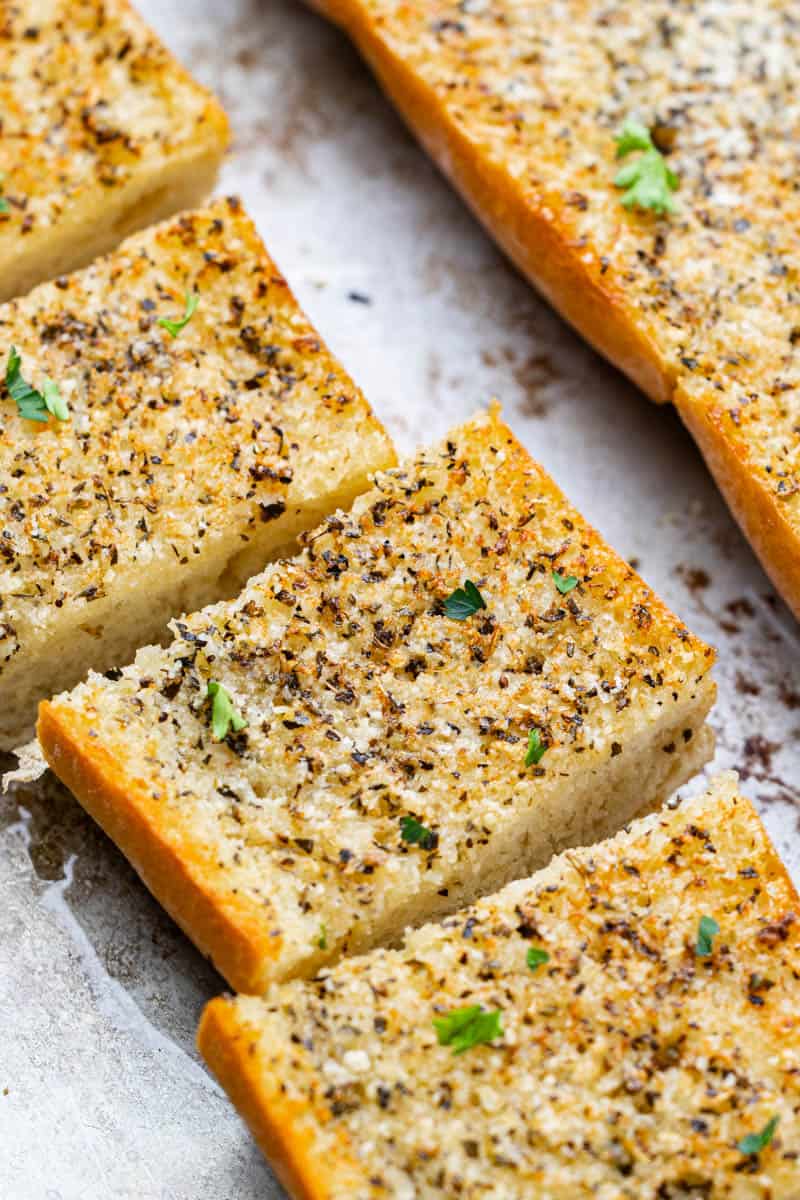
Garlic Bread Recipe Ingredients & Substitutions
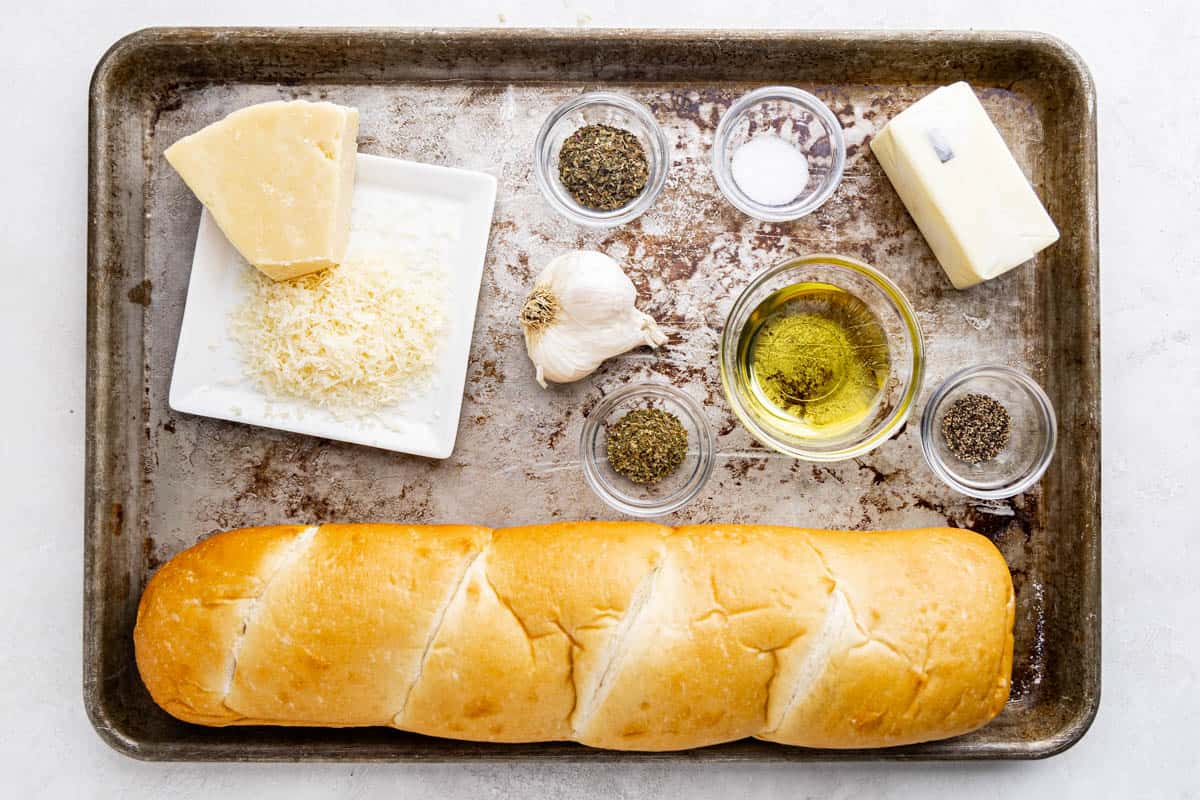
- French bread provides the perfect canvas, offering a crispy crust and soft interior. Use gluten-free bread if desired.
- Salted butter adds richness and depth of flavor. Substitute with unsalted butter if you prefer to control the saltiness, or a plant-based substitute as desired.
- Olive oil enhances the moisture and creates a smoother spread. Canola or vegetable oil can be used in a pinch.
- Dried basil and oregano infuse the bread with classic Italian herbs. Fresh herbs can be used for a more vibrant flavor; just remember to triple the amount.
- Parmesan cheese gives a salty kick. Asiago or Romano are excellent alternatives. Substitute with a plant-based parmesan substitute as desired.
- Garlic is the star of the show, offering its signature punch. Garlic powder or pre-minced garlic can substitute in a bind, but fresh is best for the full effect.
Using substitutions may affect final taste and texture.
What bread should I use to make garlic bread?
French Bread
- Characteristics: French bread is known for its crunchy crust and chewy interior, making it an ideal candidate for garlic bread. Its long, narrow shape provides ample surface area for that delicious garlic butter spread.
- Why It Works: The sturdy crust holds up well under the broiler, ensuring your garlic bread achieves that irresistible combination of crunchiness and softness.
Italian Bread
- Characteristics: Slightly softer and denser than French bread, Italian bread offers a robust texture that soaks up the garlic-infused butter beautifully.
- Why It Works: Its mild flavor complements the garlic and herbs, allowing them to shine through without overpowering the bread itself.
Sourdough
- Characteristics: Sourdough brings a tangy twist to traditional garlic bread. Its firm crust and slightly sour interior offer a complex flavor profile that stands out.
- Why It Works: The acidity of sourdough complements the richness of the butter and the sharpness of the garlic, creating a well-balanced and sophisticated version of garlic bread.
Tips for Selecting Your Bread
- Freshness is Key: No matter which type of bread you choose, make sure it’s fresh. A fresh loaf will have a better texture and flavor once transformed into garlic bread.
- Consider the Meal: Think about what you’ll be serving alongside your garlic bread. Heavier, saucy dishes might pair better with a denser bread like Italian, while lighter meals could be complemented by a crunchier ciabatta or baguette.
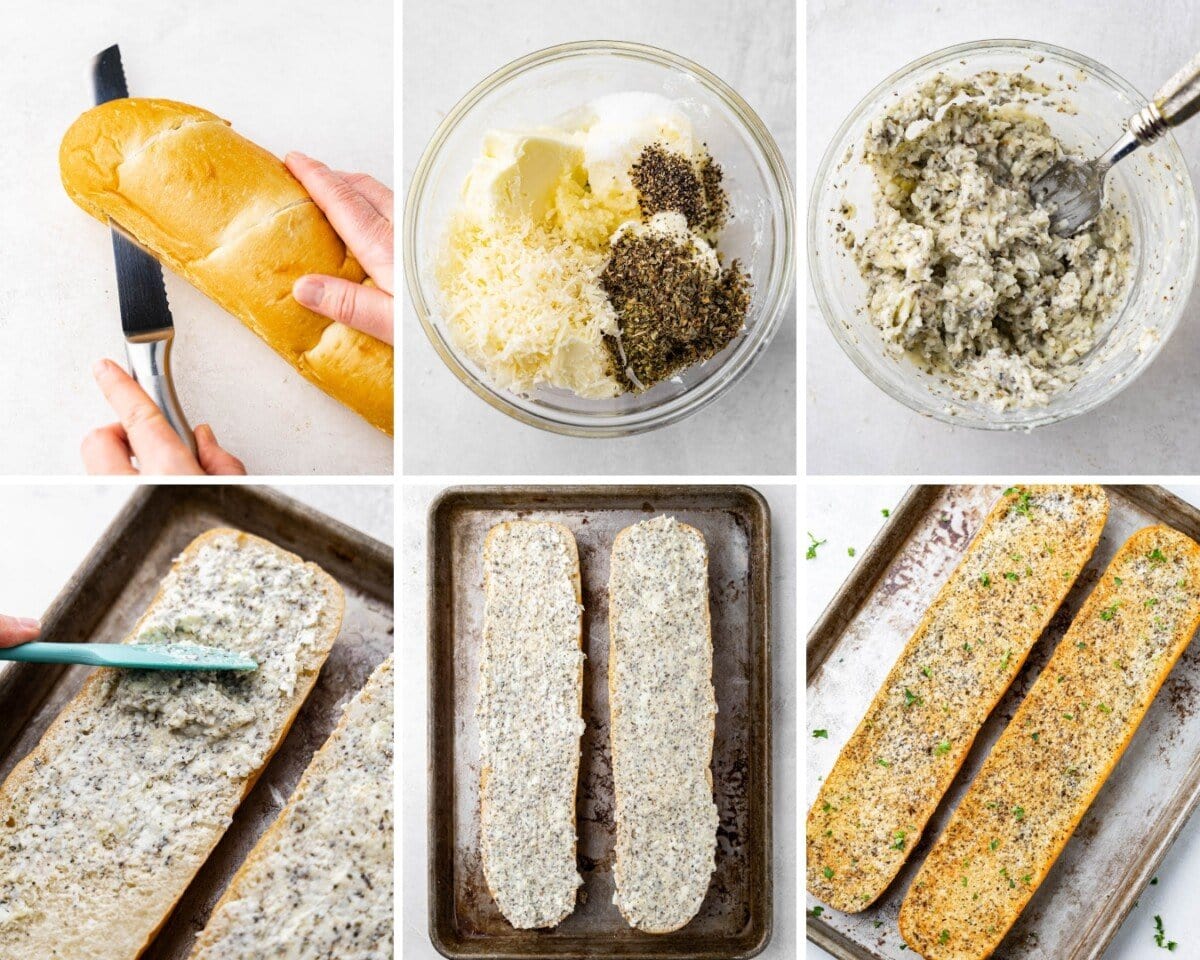
Can I make garlic bread without a broiler?
You absolutely can! Rather than broiling, bake in an oven preheated to 450 degrees Fahrenheit.
Troubleshooting
- Bread too crispy or burnt: Lower the oven rack or reduce broiling time.
- Spread not melting: Ensure your butter is at room temperature before mixing for a smoother spread.
- Flavors too mild: Increase the amount of garlic or cheese according to taste.
Tips From the Chef
- Make sure your butter has fully softened for easier mixing and spreading.
- If you prefer a softer bread, wrap the prepared loaves in foil before placing in the oven.
- For extra crispiness, open the foil for the last few minutes of baking or broiling.
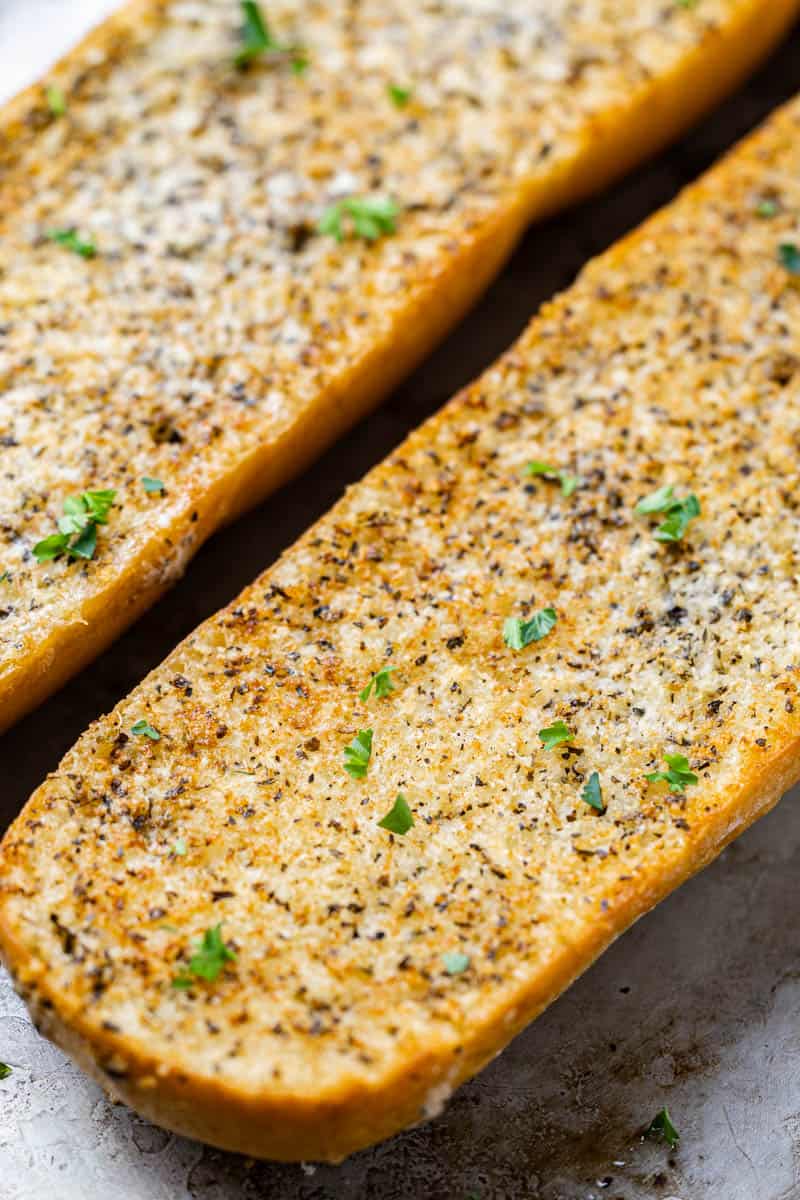
When has garlic bread finished cooking?
- Color: Golden brown edges with a lightly toasted surface.
- Texture: Crispy on the outside, soft and buttery on the inside.
- Aroma: A robust garlic smell that’s both rich and enticing.
How to Freeze Garlic Bread
Preparing Garlic Bread for Freezing
- Cool Completely: Before freezing, ensure your garlic bread is completely cooled to room temperature. This prevents condensation inside the packaging, which can lead to soggy bread when reheated.
- Wrap Tightly: Wrap the garlic bread tightly in aluminum foil. If your bread is already sliced, you can wrap each piece individually or reassemble the loaf and wrap it as a whole. For an extra layer of protection against freezer burn, you can first wrap the bread in plastic wrap and then in foil.
- Label and Date: Use a permanent marker to label the wrapped bread with the contents and the freezing date. This helps you keep track of what you have and ensures you use it while it’s still at its best quality.
Freezing
- Flash Freeze: For sliced garlic bread, place the individually wrapped slices on a baking sheet and freeze for about an hour before transferring them to a freezer bag. This step prevents the slices from sticking together, making it easier to take out only what you need later.
- Storage: Place the wrapped garlic bread (whether a whole loaf, half, or individual slices) in a heavy-duty freezer bag or an airtight container. Remove as much air as possible from the bag to minimize freezer burn.
Shelf Life
- Properly packaged garlic bread can be frozen for up to 3 months. While it might still be safe to eat beyond this time, the quality begins to decline, affecting its texture and flavor.
Reheating Frozen Garlic Bread
- From Frozen: You can reheat garlic bread straight from the freezer without needing to thaw it first. Preheat your oven to 350°F (175°C). If your bread is wrapped in foil, place it directly on the oven rack. For a softer crust, leave it wrapped in foil. For a crisper crust, open the foil for the last few minutes of heating.
- Heating Time: Whole loaves may take 15-20 minutes to heat through, while individual slices might only need 10-15 minutes. The exact time will depend on the size of the bread and your oven.
- Broiler Finish: For an extra crispy top, finish the bread under the broiler for a minute or two after it’s heated through, but watch it closely to prevent burning.
Storage & Reheating Instructions
- Refrigerator: Store in an airtight container or wrap tightly in foil for up to 2 days.
- Reheating: Warm in the oven at 350°F until heated through for best results.
Serve Garlic Bread With…
The Most Amazing Lasagna
2 hrs 35 mins
Homemade Spaghetti Sauce Recipe
1 hr 10 mins
The Best Baked Meatballs
40 mins
Easy Chicken Alfredo
35 mins
Watch the video below where Rachel will walk you through every step of this recipe. Sometimes it helps to have a visual, and we’ve always got you covered with our cooking show. You can find the complete collection of recipes on YouTube, Facebook Watch, or our Facebook Page, or right here on our website with their corresponding recipes.

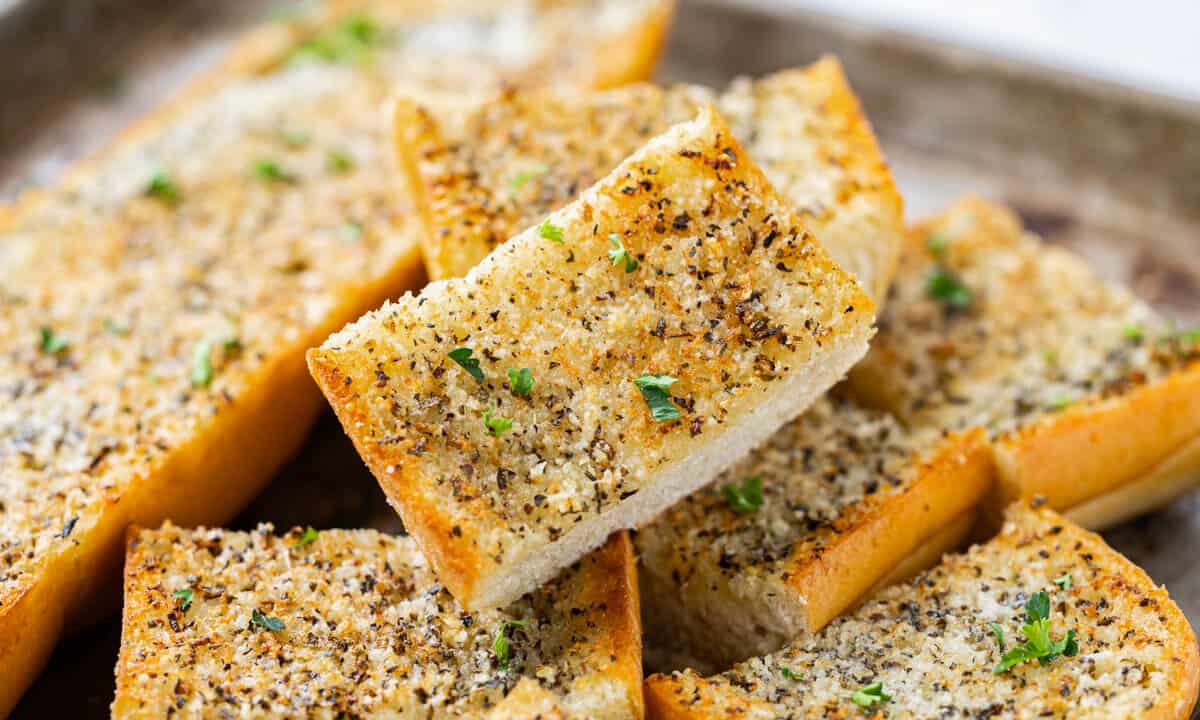
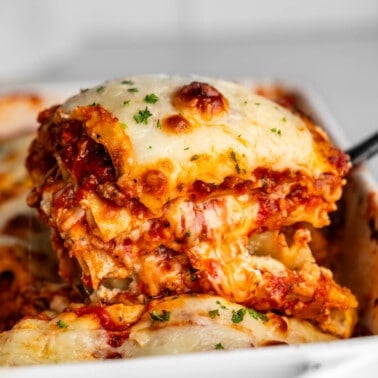
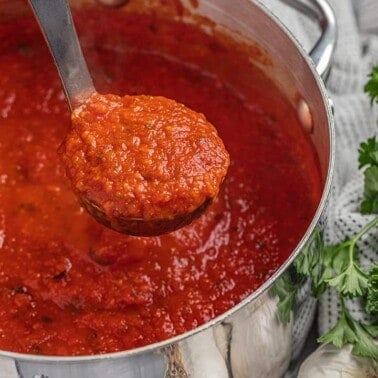
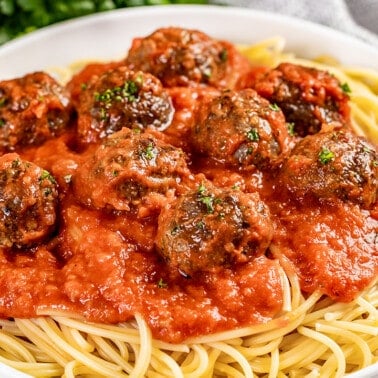
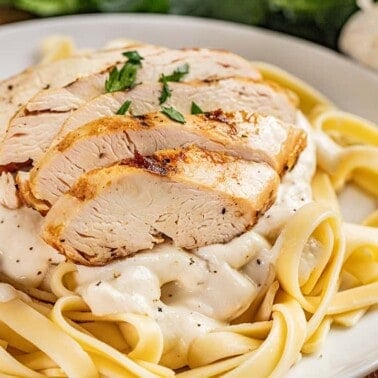
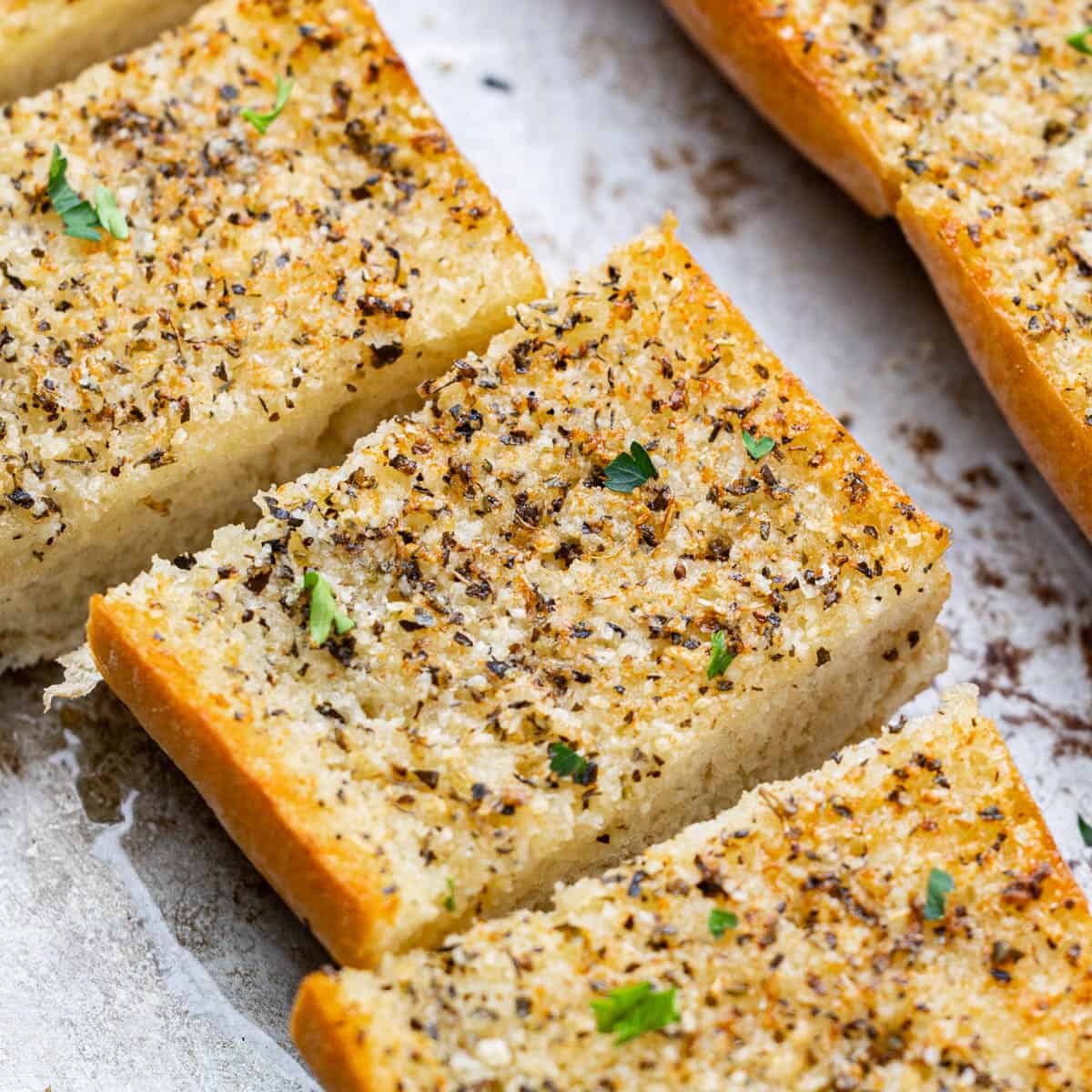
Made this yesterday and was just lush.
Will be making this again all week 😊🍷
Yes, oh yes. Easy, amazing, family favorite.
Making this for the 10th time along with your chicken parm. I always have leftovers so I have a chicken parm sub on the garlic bread the next day
This is the best bread ever! The only problem I had was that it was a little bit too salty so next time I will use one stick of butter that is salted and one stick that is unsalted. This will be my go to recipe from now on! Thank you Rachel!
This was excellent! I was hesitant about the amount of herbs but the flavor was spot on. Highly recommend using fresh garlic, and highly recommend this recipe. Thank you!
I have now made this garlic bread like 6 or 7 times. It is always the star of the meal….Even the pickiest eaters or non-complimenters say how good it is. Thank you, Rachel!
Tried this and it is the BEST!!!
Made this to go with our evening pasta meal. Delicious, but we are not cheese eaters, but perfect without it!
Thank you so much for this recipe!
Amazing….thanks once again for the best from the best recipe
I have made this garlic bread many times and I always get RAVE reviews. Even my brother-in-law who is kosher and never eats any of my food raved about it. It is my go-to now. Great with steak, chicken, or pastas.